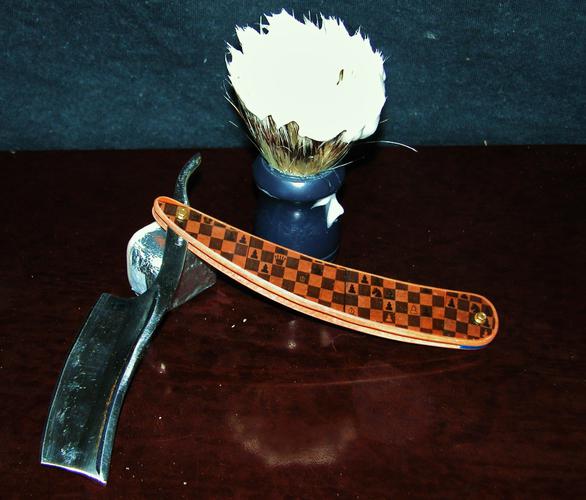Results 11 to 20 of 55
Thread: Microscope for honing
-
08-23-2015, 01:59 PM #11

If your regular strokes aren't hitting those spots, you might vary your strokes (x strokes, heel-leading, windshield-wiper, etc) and see if that helps you make honing contact with those spots.
Keep your pivot dry!
-
08-23-2015, 01:59 PM #12
-
08-23-2015, 03:04 PM #13
-
08-23-2015, 03:43 PM #14

Here is a picture of using magnification in a honing instructional
pamphlet dated 1884.
https://ia802604.us.archive.org/Book...ale=4&rotate=0
-
The Following User Says Thank You to Leatherstockiings For This Useful Post:
JSmith1983 (08-23-2015)
-
08-23-2015, 04:08 PM #15

Here I was thinking that using loupes and scopes for honing razors was a fairly recent idea. Do you happen to have a copy or link to the booklet? I love reading the old articles.
Last edited by JSmith1983; 08-23-2015 at 04:11 PM.
-
08-23-2015, 04:30 PM #16

It's in this thread started by Sashimi. There are links to several barber manuals in post #1 of the thread. The picture from 1884 came from The Art of Honing a Razor by Charles Lonergram.
http://straightrazorpalace.com/shavi...ml#post1533560Last edited by Leatherstockiings; 08-23-2015 at 04:33 PM.
-
The Following 2 Users Say Thank You to Leatherstockiings For This Useful Post:
JSmith1983 (08-23-2015), MisterMoo (08-27-2015)
-
08-23-2015, 09:41 PM #17

Bevel set is crucial to honing success.
Scoping your edges takes out the guess work and skill. Why do a hard thing just for the sake of it???
Guys who do rolling x strokes and all those tricks are really working around an unset bevel. with old or warped razors sometimes this is preferable to honing off a ton of metal to get it set. Doing this can give a ton of hone wear on the spine and or really fat bevels. I would suggest using a microscope especially on a warped razor. Just make sure each successive scratch pattern removes the previous hones scratches and go right to the edge. Also makes sure your hones are reasonably lapped flat each time they are used.
Joe
-
08-23-2015, 09:56 PM #18
-
08-23-2015, 11:17 PM #19Senior Member



- Join Date
- Apr 2012
- Location
- Diamond Bar, CA
- Posts
- 6,553
Thanked: 3215
So, I’m learning to drive and just got my first, new car… Do I have to look out the windshield, all the time, or just when I hear a crunching sound?
To the OP, photos would help advise you.
-
08-24-2015, 12:20 AM #20


 74Likes
74Likes LinkBack URL
LinkBack URL About LinkBacks
About LinkBacks






 Reply With Quote
Reply With Quote





